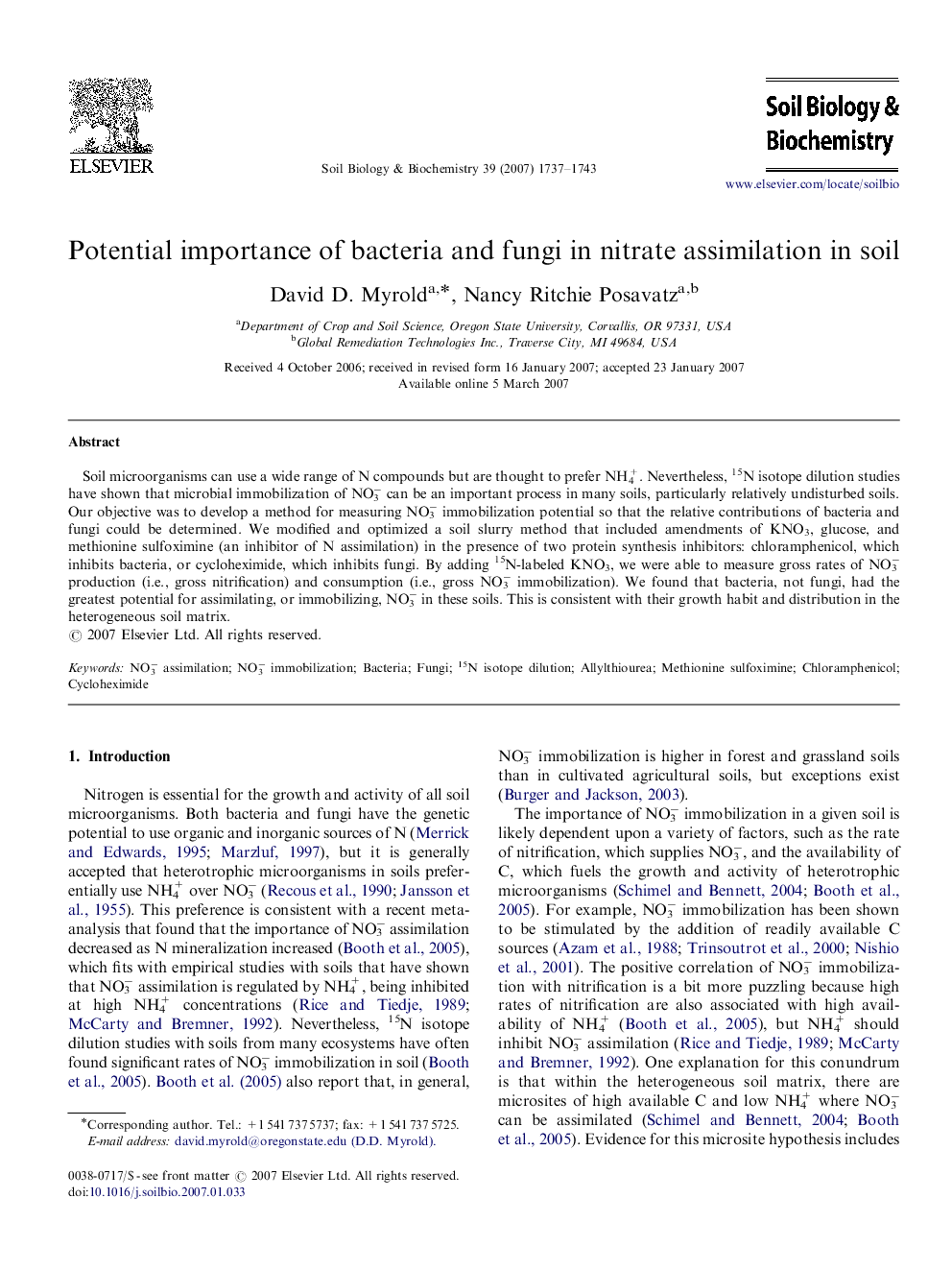| Article ID | Journal | Published Year | Pages | File Type |
|---|---|---|---|---|
| 2026239 | Soil Biology and Biochemistry | 2007 | 7 Pages |
Soil microorganisms can use a wide range of N compounds but are thought to prefer NH4+. Nevertheless, 15N isotope dilution studies have shown that microbial immobilization of NO3− can be an important process in many soils, particularly relatively undisturbed soils. Our objective was to develop a method for measuring NO3− immobilization potential so that the relative contributions of bacteria and fungi could be determined. We modified and optimized a soil slurry method that included amendments of KNO3, glucose, and methionine sulfoximine (an inhibitor of N assimilation) in the presence of two protein synthesis inhibitors: chloramphenicol, which inhibits bacteria, or cycloheximide, which inhibits fungi. By adding 15N-labeled KNO3, we were able to measure gross rates of NO3− production (i.e., gross nitrification) and consumption (i.e., gross NO3− immobilization). We found that bacteria, not fungi, had the greatest potential for assimilating, or immobilizing, NO3− in these soils. This is consistent with their growth habit and distribution in the heterogeneous soil matrix.
